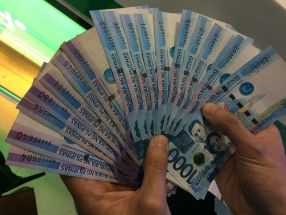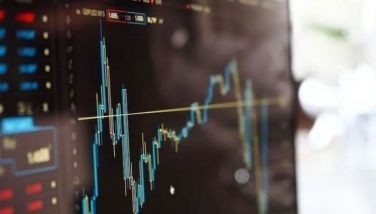‘Ready for ASEAN Economic Community 2015?’

Are we really ready for the ASEAN Economic Community of 2015? The government, through Secretary of Foreign Affairs Alberto del Rosario, says we are 87.5 percent ready.
“A checklist of ‘to do’ items.” A checklist is a useful guide. But it tells us little about the more important and the less significant items in that checklist. Thus, it is not mere counting of numbers. Moreover, 87.5 percent is short of 100 percent! And it is now November 2014, just two months before 2015.
Have we done enough reforms so that we can realize maximum gains from the ASEAN Economic Community? That should be the ultimate task for preparedness.
Let us judge whether we are indeed ready at this point to gain as much from ASEAN as our neighbors certainly will be able to do.
From personal observation, the most difficult reforms to undertake are often the last to be adopted. I see that the main reforms we have to deal with (for instance, revisions of Constitutional economic provisions, labor market reforms, and investments in critical infrastructure) are stuck in Congress, in our own resistance, within the impasse of bureaucratic processes, and in the politics of wait and see.
Taking this into account, it is easy to conclude how 82 percent when weighted by importance of the item taken (or waiting to be taken), the readiness could be 50 percent or 70 percent but certainly not 82 percent!
“ASEAN Economic Community(AEC).” The AEC is the culmination of regional economic cooperation so far within the ASEAN. Founded in 1967 as a club among five neighbors – Indonesia, Malaysia, Philippines, Singapore and Thailand –it was intended to deal on political matters as a means of quieting tensions among themselves and forming a shield against the uncertainties of the Cold War.
Then in 1976, hemmed in by the energy crisis and problems attendant to international concern on national and regional food security, ASEAN, through the meeting of the five heads of state of member countries, decided to close ranks. There were good windows for economic cooperation for the mutual benefit of the member states, the most attractive of which were, at the time, energy and food.
The heads of state of the five member countries directed their economic ministers to organize for economic cooperation, and this the latter did in quick response and inclusively.
Organizing through various economic committees from the respective sector ministries in each country, the avenues for economic cooperation and exchange of information began to flourish even if slowly.
Across economic sectors, economic cooperation agreements began to unfold. Progressive steps in different directions were made in several fields – agriculture, energy, transportation, tourism, finance, investment and trade.
One instrument of economic cooperation was preferential trade in products produced within the member countries. The coverage of the initial preferential tariff agreements were narrow and incremental, starting in the late 1970s.
The 1990s however were great for the conclusion of trade agreements worldwide. The European Common Market had evolved into the European Union. Also, the North American Trade Agreement came into being with members including the US, Canada and Mexico. Also, older regional economic agreements (in Latin America, the Caribbean, and in Africa) that had gotten stalled in various parts also began to deepen further.
The Uruguay multilateral round of tariff negotiations had finally led to a breakthrough: the conclusion of the multilateral rounds of tariff concessions that reduced trade tariff and non-tariff barriers. A new World Trade Organization (WTO) was established to regulate, monitor and enforce the rules of world trade agreed upon.
Regional trading blocs were given their blessings and recognition under the WTO. This coincident development further encouraged deeper ASEAN tariff preferences.
“Free trade area.” The ASEAN Free Trade Agreement (AFTA), signed in 1992, committed all member countries to reduce their commercial tariffs toward zero level by 2015. The AFTA remains the center-piece of the ASEAN regional cooperation. However, the “ASEAN Economic Community” remains as the over-arching framework.
The region is a community of economies with cross-borders becoming free for the movement of goods, factors and raw materials.
At inception, the preferential tariff agreement covered a narrow range of traded goods among ASEAN countries. As time and experience evolved, the region widened coverage in goods until, by 2015, all tariffs (except for a limited sensitive items) disappear.
Each of the countries will retain their external system of tariffs for all other countries. A free trade agreement is not a customs union. The latter – like the European Union or even the case of a single country like the USA – has free trade among the states and keep, in addition, a single or unified tariff system against all other foreign countries.
“The ASEAN economic market.” When AFTA was concluded in 1992, it had six signatories. By that time, Brunei had already joined the ASEAN original five. In 1995, Vietnam joined; followed by Laos and Myanmar (1997) and then Cambodia (1999).
The latecomers to ASEAN were required to be signatories of AFTA, but they were given longer time for adjustments in order to meet the tariff reduction obligations. Papua New Guinea and East Timor, newly independent neighbours, are active regional observers, so that they could become members in the future.
The ten-member ASEAN market (in 2014) has a population of about 680 million people, with an average GDP per head in (purchasing power equivalent) US dollars of 8,369. Although this level of GDP is not very high, the ASEAN countries belong to the most dynamic group of developing countries in recent years.
“Review of steps already taken and further measures to be taken by the Philippine government.” The country’s foremost think tank on economic and social development issues, the Philippine Institute for Development Studies (PIDS), published a special volume “On the ASEAN Economic Community.”
The publication is in the 2012 issue of the Philippine Journal of Development (volume 29, 2012). This volume has a number of important articles that reviews our efforts at preparing for the ASEAN Economic Community.
PIDS experts – led by Erlinda Medalla, Rafaelita Aldaba, Gilbert Llanto, Roehlano Briones, Danila C. Israel – and others contribute their assessments of what needs to be done further if we are to maximize or simply to extend the gains we can derive from ASEAN.
In the next week, I will cite instances of policy shortcomings that need to be reformed if we want to expand the opportunities available to us in ASEAN.
My email is: [email protected]. Visit this site for more information, feedback and commentary: http://econ.upd.edu.ph/gpsicat/
- Latest
- Trending































